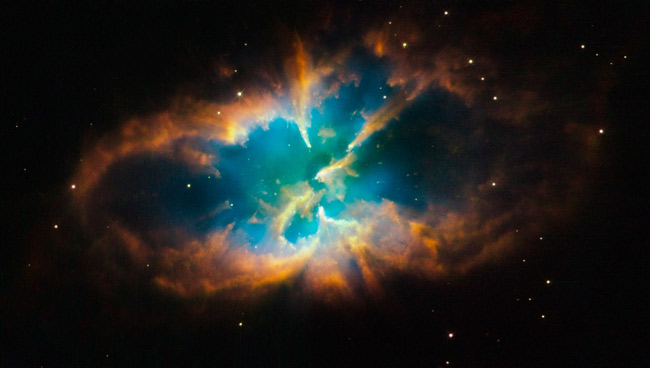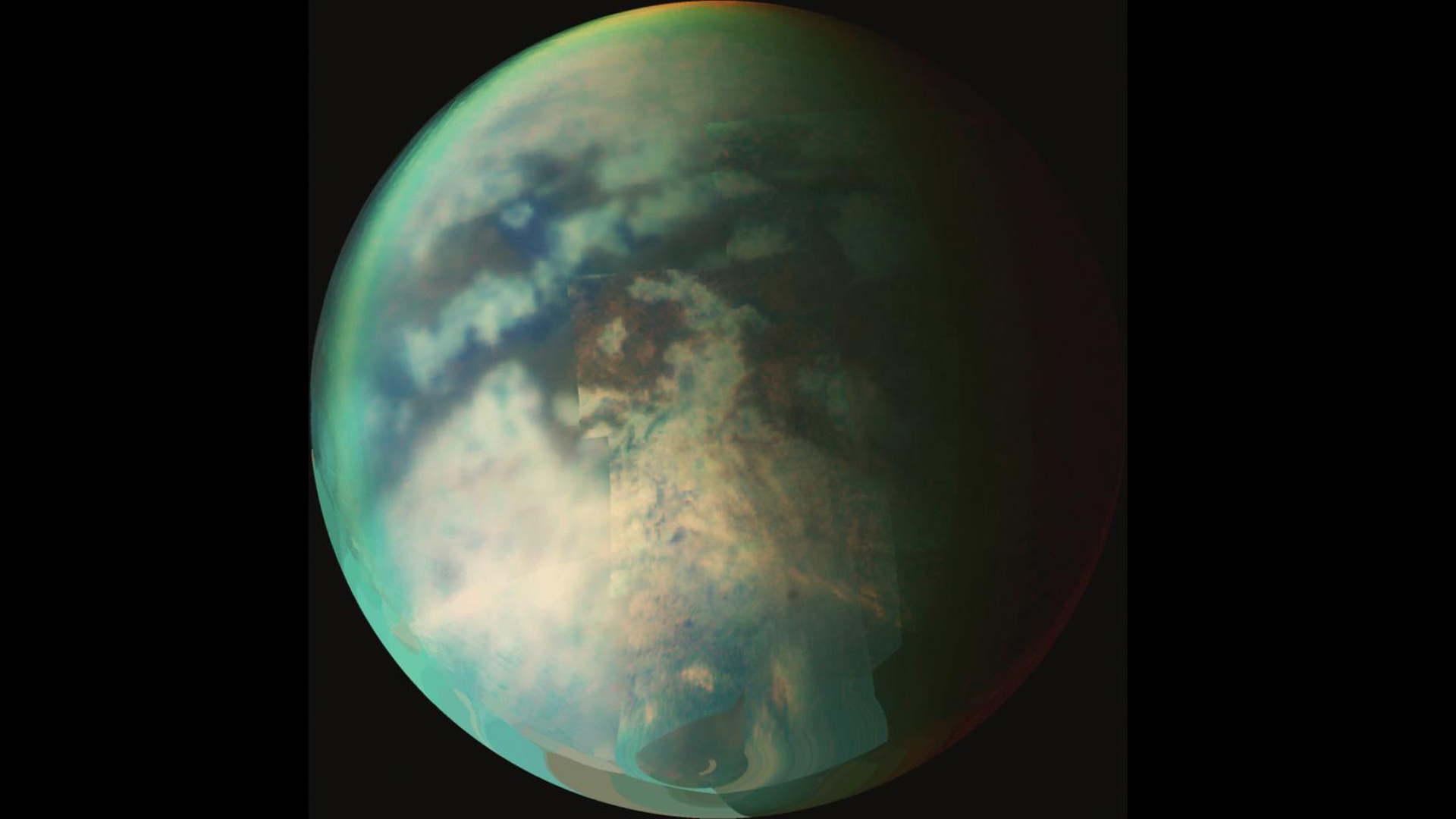Picturesque Nebula Spotted in Distant Star Cluster

The Hubble Space Telescopehas taken a snapshot of a picturesque planetary nebula tucked away in a distantcluster of stars within the Milky Way Galaxy
The image, a swirl of wispygreen, red and blue hues, spotlights the unique nebula NGC 2818 nestled withina star cluster some 10,000 light-years from Earth in the southern constellationPyxis, or The Compass.
NGC 2818 is one of very fewplanetary nebulae in our galaxy located within an open cluster, in thiscase cluster NGC 2818A. Open clusters, in general, are loosely bound and theydisperse over hundreds of millions of years. Stars that form planetary nebulaetypically live for billions of years. Hence, it is rare that an open clustersurvives long enough for one of its members to form a planetary nebula. Thisopen cluster is particularly ancient, estimated to be nearly one billion yearsold.
The spectacular structureof NGC 2818 (also known as PLN 261+8.1) contains the outer layers of a sun-likestar that were sent off into interstellar space during the star's final stagesof life. These glowing gaseous shrouds were shed by the star after it ran outof fuel to sustain the nuclear reactions in its core.
Planetarynebulae can have extremely varied structures. NGC 2818 has a complex shapethat is difficult to interpret. However, because of its location within thecluster, astronomers have access to information about the nebula, such as itsage and distance that might not otherwise be known.
Planetary nebulae fade awaygradually over tens of thousands of years. The hot, remnant stellar core of NGC2818 will eventually cool off for billions of years as a white dwarf. Our ownsun will undergo a similar process, but not for another 5 billion years or so.
This Hubble image was takenin November 2008 with the WideField Planetary Camera 2. The colors in the image represent a range ofemissions coming from the clouds of the nebula: red represents nitrogen, greenrepresents hydrogen, and blue represents oxygen.
Breaking space news, the latest updates on rocket launches, skywatching events and more!
- Vote Now: The Strangest Things in Space
- Images: Nebulae
- Video - Vision of Hubble

Space.com is the premier source of space exploration, innovation and astronomy news, chronicling (and celebrating) humanity's ongoing expansion across the final frontier. Originally founded in 1999, Space.com is, and always has been, the passion of writers and editors who are space fans and also trained journalists. Our current news team consists of Editor-in-Chief Tariq Malik; Editor Hanneke Weitering, Senior Space Writer Mike Wall; Senior Writer Meghan Bartels; Senior Writer Chelsea Gohd, Senior Writer Tereza Pultarova and Staff Writer Alexander Cox, focusing on e-commerce. Senior Producer Steve Spaleta oversees our space videos, with Diana Whitcroft as our Social Media Editor.
